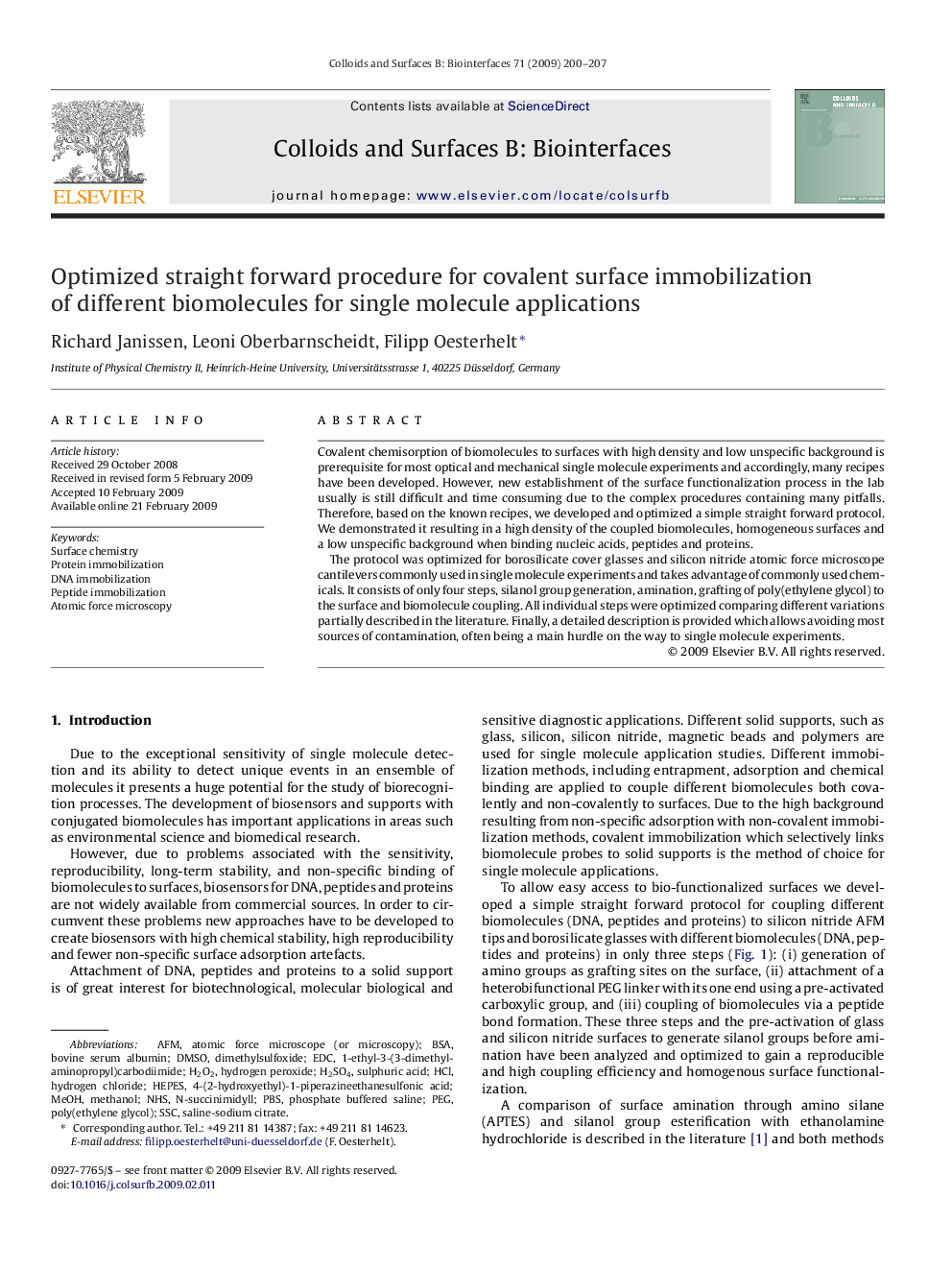| Article ID | Journal | Published Year | Pages | File Type |
|---|---|---|---|---|
| 602202 | Colloids and Surfaces B: Biointerfaces | 2009 | 8 Pages |
Covalent chemisorption of biomolecules to surfaces with high density and low unspecific background is prerequisite for most optical and mechanical single molecule experiments and accordingly, many recipes have been developed. However, new establishment of the surface functionalization process in the lab usually is still difficult and time consuming due to the complex procedures containing many pitfalls. Therefore, based on the known recipes, we developed and optimized a simple straight forward protocol. We demonstrated it resulting in a high density of the coupled biomolecules, homogeneous surfaces and a low unspecific background when binding nucleic acids, peptides and proteins.The protocol was optimized for borosilicate cover glasses and silicon nitride atomic force microscope cantilevers commonly used in single molecule experiments and takes advantage of commonly used chemicals. It consists of only four steps, silanol group generation, amination, grafting of poly(ethylene glycol) to the surface and biomolecule coupling. All individual steps were optimized comparing different variations partially described in the literature. Finally, a detailed description is provided which allows avoiding most sources of contamination, often being a main hurdle on the way to single molecule experiments.
